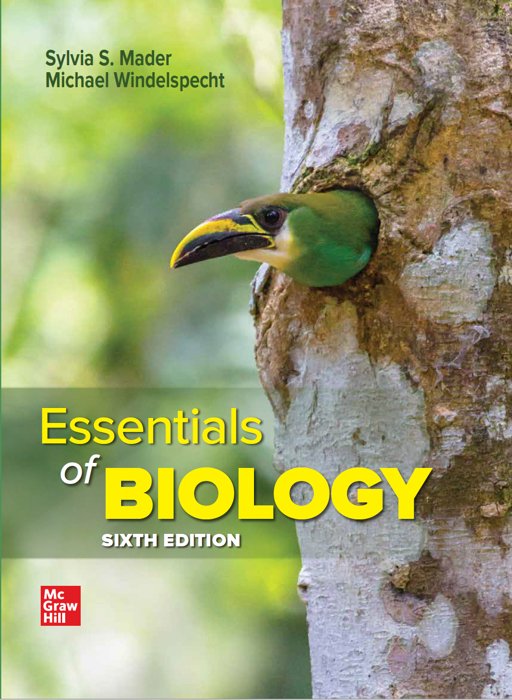How an Emerald Toucan Inspired a Textbook Cover
What inspires an author to select a picture to be on the the cover of their book? Often, at least for biology texts, the choices have focused on what I like to call the warm fuzzies – animals that invoke a response in people. Wolves, big cats, whales, and even some pretty bugs (well, butterflies) make people feel really good. People like to feel good about the books that they buy.
One of the more interesting things about textbook writing is that while you may think that the author has the final say in what is on the cover, surprisingly, that is rarely the case. Publishers have an army of marketing people who weigh in on the cover design. It often all comes down to marketing and marketers love warm fuzzy animals that make people feel good.
Over the years I have authored a bunch of science books, and over time, I stopped really caring about the marketing aspect, and started thinking about what inspired me to become a biologist, then an author, and eventually, a student again. So, in order to get a photo on the cover, I needed to convince my editors and marketers that the cover inspired me….. and that is when I started to really enjoy the process again. And that brings us to why there is an emerald toucan on the cover the 7th edition of the Essentials of Biology book.
Into the Rainforest
The story actually begins in the rainforests of Belize, several years before I even started writing any of the content for the book. I was in Belize because I had helped co-found a company called Inspire EdVentures with two great friends. Each year we bring students and special interest groups to experience the natural and cultural wonders of this small country. Over time, I’ve fallen in love with its rainforests, coral reefs, and Mayan culture. As a biologist, it’s as close as I can get to heaven.
A few years ago, Eric Weber (co-founder of the company and a great photographer and friend) and I were in the country looking for new places to bring students, and we just happen to stop at St. Herman’s Blue Hole National Park (not to be confused with the offshore Great Blue Hole), just north of the Sibun River and not far from Sleeping Giant Lodge, where we are usually based during our visits. It was a muggy afternoon, and in Belize, that means you can taste the water in the air. While most people head to the Blue Hole to do some cave tubing or escape the heat of the day, we had grown tired of photographing flowers and trees were looking for wildlife, and more specifically, birds.
We stopped at the front desk, and after paying our entrance fees, we quizzed the guide as to where we could go in the park to get some good wildlife pictures. For once, our timing perfect, for at the time there had been sightings of green (emerald) toucans nesting in the picnic area.
Encountering a Green Toucan
Although I am a biologist, and therefore am supposed to be the keeper of all information regarding every creature, both living and extinct (just ask my family), the truth is that I knew nothing about green toucans. In fact, I really didn’t even know they existed until the guide told us that they were just a few hundred feet away, and nesting. For all I knew, a green toucan was just an unripe toucan.
We headed down into the small valley, where the humidity soared above 150% (yes, I know, but come with me one time to Belize in June and you will agree), found some picnic tables where we could wait, and ….. nothing. No birds, wind, insects… nothing but my sweat returning to the Blue Hole watershed.
I am not a patient creature, but luckily for me, Eric is. As an expert photographer, I have watched him sit for hours waiting for a sunset or a perfect shot of the stars. As I sat there, dripping, he gave me a look that said “stop your fidgeting, sit still, and they will come”.
And they did.
A pair of emerald toucans had made a nest in the hole of a nearby tree. There must have been young inside, since the parents were taking turns heading out into the forest for food. We didn’t see the nest initially, but instead noticed a bright green toucan sitting high up in a tree, with a red berry in its mouth. It was watching us closely, and obviously did not want to unveil the location of their nest.
Photo by Eric Weber, Inspire-EdVentures LLC
This showdown took some time to play out, with the parent patiently waiting on the branch, and us patiently waiting at the picnic table. Almost immediately, I’d forgotten about the heat and humidity and remained fixated on this little green bird. Eventually, after what seemed to be hours but was probably more like minutes, the parent decided that we were no longer a threat, and effectively ignore us. One thing I noticed right away was that one parent always remained nearby, since green toucans are prey for many of the other bird species in Belize, but that they alternated turns heading into the forest. I also had completely forgotten about the heat and humidity, for although I didn’t know it just a short time before, this was exactly what I had come to the rainforest to see.
Photo by Eric Weber - Inspire EdVentures and 5 Blue Media
From Rainforest to Cover
As always, the return to the United States is a bit of a letdown, and as usual, it took me several days to download the photos from my camera. As I glanced through the hundreds of pictures of students on excursions and Mayan ruins, I came across a few pics of my green toucan friends, and smiled.
Photo by Eric Weber - Inspire EdVentures LLC and 5 Blue Media
You see, I did not expect to do anything important that day, had made no plans, and was not expecting any discoveries or adventures. Instead, a pair of birds, of a species that I did not even know existed until that day in the rainforest, had reminded me of why I became a biologist and author – to experience the wonders of nature, and then share that passion with others.
When the time came to select the cover photo, my thoughts immediately returned to the toucans. Luckily for us, Eric’s photos were of far better quality than mine, and soon we had decided on the picture that you see here. To me, every time I see this toucan, I wonder what he was thinking as he poked his head out of the nest. Caution? Curiosity? or maybe he was just enjoying the scenery.
While it was still a warm fuzzy, it was a warm fuzzy with a story. The sell to the team this time was easy. The story sold the cover.
And that is how a green toucan ended up on the cover of a biology text.
I have learned that you can go looking for inspiration, or sometimes it simply finds you in the most unlikely of places. Sometimes, if you are lucky, you get to share that inspiration with others.
Learn more about green toucans here and check out more photos of Belize by Eric Weber on his 5BlueMedia website. Interested in visiting Belize with a class? Check out the options from Inspire-EdVentures, and just maybe I will be your guide!







Where did it all begin? As always, I took the unconventional path…. and it started with 17th century science.